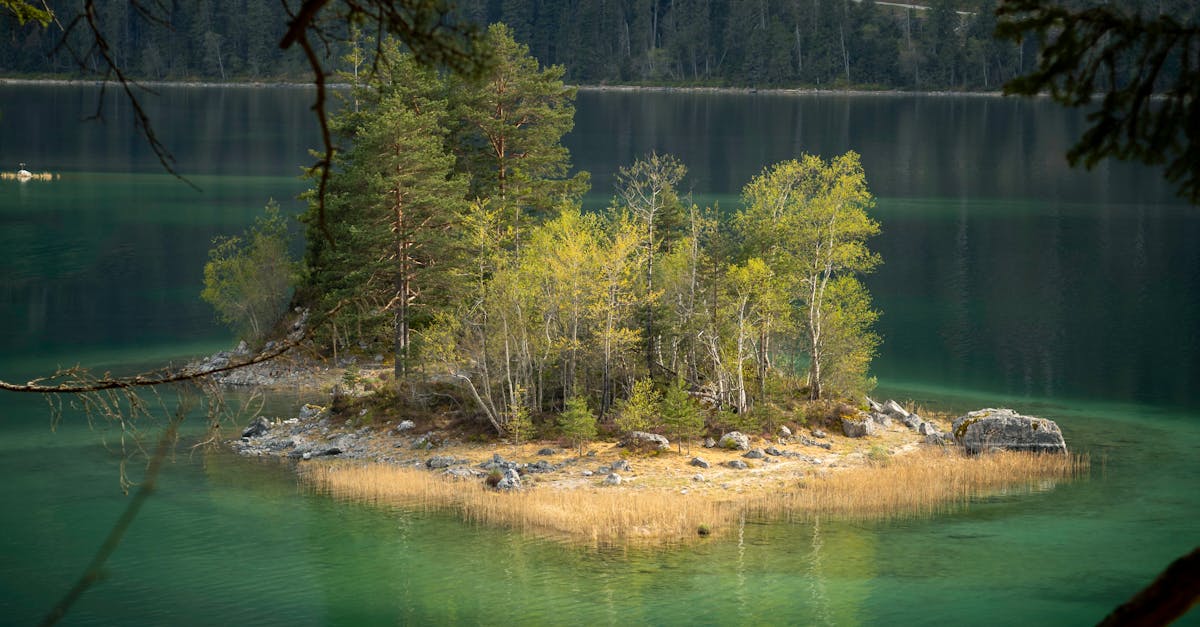
Table Of Contents
ShadeProviding Trees in Arizona's Climate
Arizona's climate presents unique challenges when it comes to selecting trees that provide much-needed shade. The Mesquite Tree, a resilient native plant, is an excellent choice for those seeking shade-providing trees. With its fast growth rate and spreading canopy, the Mesquite Tree offers relief from the intense desert sun. While relatively low-maintenance, regular pruning is essential to ensure optimal growth and shape. Incorporating organic mulch around the tree's base can help retain moisture and promote healthier root development.
For Tree and Shrub Care in Arizona, the Acacia Redolens is a versatile evergreen shrub that thrives in the state's arid conditions. Known for its bright green foliage and yellow puffball flowers, this shrub adds color and texture to any landscape throughout the year. Planting Acacia Redolens in well-drained soil and providing adequate sunlight will help maintain its vibrancy. Regular watering, especially during the hot summer months, is crucial for the shrub's overall health and longevity.
Mesquite Tree
Mesquite trees are a common sight in Arizona's landscapes, known for their drought tolerance and unique appearance. These trees can reach impressive heights, providing ample shade in the scorching Arizona sun. Mesquite trees also produce small, yellow flowers that add a touch of beauty to their rugged features. In terms of Tree and Shrub Care, mesquite trees require minimal watering once established, making them ideal for water-conservation efforts in arid regions like Arizona.
Aside from their aesthetic appeal, mesquite trees also offer environmental benefits. Their deep root systems help prevent soil erosion, making them an essential part of maintaining the health of Arizona's landscapes. Additionally, these trees provide valuable habitat and food sources for various wildlife species. When incorporating mesquite trees into your landscaping, consider their mature size and proximity to structures to ensure they have adequate space to thrive.
Evergreen Shrubs for AllYear Interest
Evergreen shrubs are excellent additions to any landscape, providing year-round interest and color. Acacia redolens, also known as Prostrate Acacia, is a popular choice for Arizona's landscapes due to its low maintenance requirements and beautiful golden flowers that bloom in the spring. This shrub thrives in full sun and well-drained soil, making it a versatile option for various garden settings. To ensure the health and vitality of Acacia redolens, proper Tree and Shrub Care is essential, including regular watering during the establishment period and pruning to maintain its desired shape and size.
Another great evergreen shrub for year-round interest is the Arizona Cypress, also known as Cupressus arizonica. This hardy shrub features striking blue-green foliage that adds a touch of color to the landscape, even during the coldest months. Arizona Cypress is drought-tolerant once established, making it a suitable choice for Arizona's arid climate. To promote optimal growth and health, consider incorporating regular fertilization and mulching into your Tree and Shrub Care routine.
Acacia Redolens
Acacia redolens, also known as the Prostrate Acacia or Low Acacia, is a stunning evergreen shrub native to the arid regions of Arizona. With its low-growing habit and cascading branches, this shrub makes a beautiful ground cover option for landscapes in the state. Acacia redolens boasts silvery-gray foliage and delicate yellow flowers that bloom in late winter to early spring, adding a splash of color to any garden.
Tree and shrub care for Acacia redolens is relatively low-maintenance, requiring full sun and well-draining soil to thrive. Once established, this shrub is quite drought-tolerant, making it a perfect choice for xeriscapes or water-wise gardens. Pruning can be done as needed to maintain its shape and promote healthy growth. Additionally, applying a layer of mulch around the base of the plant can help conserve soil moisture and suppress weeds, aiding in the overall health of the Acacia redolens shrub.
Native Plants That Attract Wildlife
For landscapes in Arizona, incorporating native plants that attract wildlife can enhance the ecosystem and bring vibrant activity to your yard. The Desert Willow (Chilopsis linearis) is a favorite among hummingbirds and butterflies. This tree produces beautiful, trumpet-shaped flowers in shades of pink and white, adding a pop of color to your garden while providing a nectar source that will entice pollinators. Placing Desert Willow strategically in your landscape can create a lively and enchanting outdoor space.
Another native plant that draws wildlife is the Acacia Redolens, a shrub that attracts a variety of birds with its small yellow flowers and aromatic foliage. Birds are attracted to the dense branches of the Acacia Redolens for nesting and shelter, making it a vital part of creating a welcoming environment for local wildlife in your garden. Incorporating these plants not only benefits the ecosystem but also adds visual interest and a touch of natural beauty to your outdoor space. Tree and shrub care is essential to maintain the health and longevity of these plants, ensuring their continued ability to attract and support local wildlife.
Desert Willow
Desert Willow, scientifically known as Chilopsis linearis, is a stunning tree that thrives in Arizona's arid climate. With its slender leaves and trumpet-shaped flowers that range from pink to purple hues, the Desert Willow adds a touch of elegance to any landscape. This tree blooms profusely during the summer months, attracting pollinators such as bees and hummingbirds to your garden.
When it comes to Tree and Shrub Care for Desert Willow, it is essential to provide well-draining soil and ample sunlight for optimal growth. This low-maintenance tree is drought-tolerant once established, making it ideal for xeriscapes or water-wise gardens. Pruning dead branches and shaping the canopy in late winter can help promote healthy growth and maintain its graceful appearance.
FAQS
What are some shade-providing trees suitable for Arizona's climate?
Some shade-providing trees that thrive in Arizona's climate include Mesquite Trees and Desert Willow.
Can you recommend an evergreen shrub that provides all-year interest in Arizona's landscapes?
Acacia Redolens is an evergreen shrub that offers all-year interest with its attractive foliage and flowers in Arizona's landscapes.
How can native trees and shrubs attract wildlife to Arizona's landscapes?
Native plants like Desert Willow can attract wildlife such as birds and insects, contributing to the biodiversity of Arizona's landscapes.
Are Mesquite Trees drought-tolerant for Arizona's arid climate?
Yes, Mesquite Trees are well-known for their drought tolerance and are suitable for Arizona's arid climate.
Do Evergreen Shrubs like Acacia Redolens require special care in Arizona's landscapes?
Evergreen Shrubs such as Acacia Redolens are low-maintenance and require minimal care once established in Arizona's landscapes.


